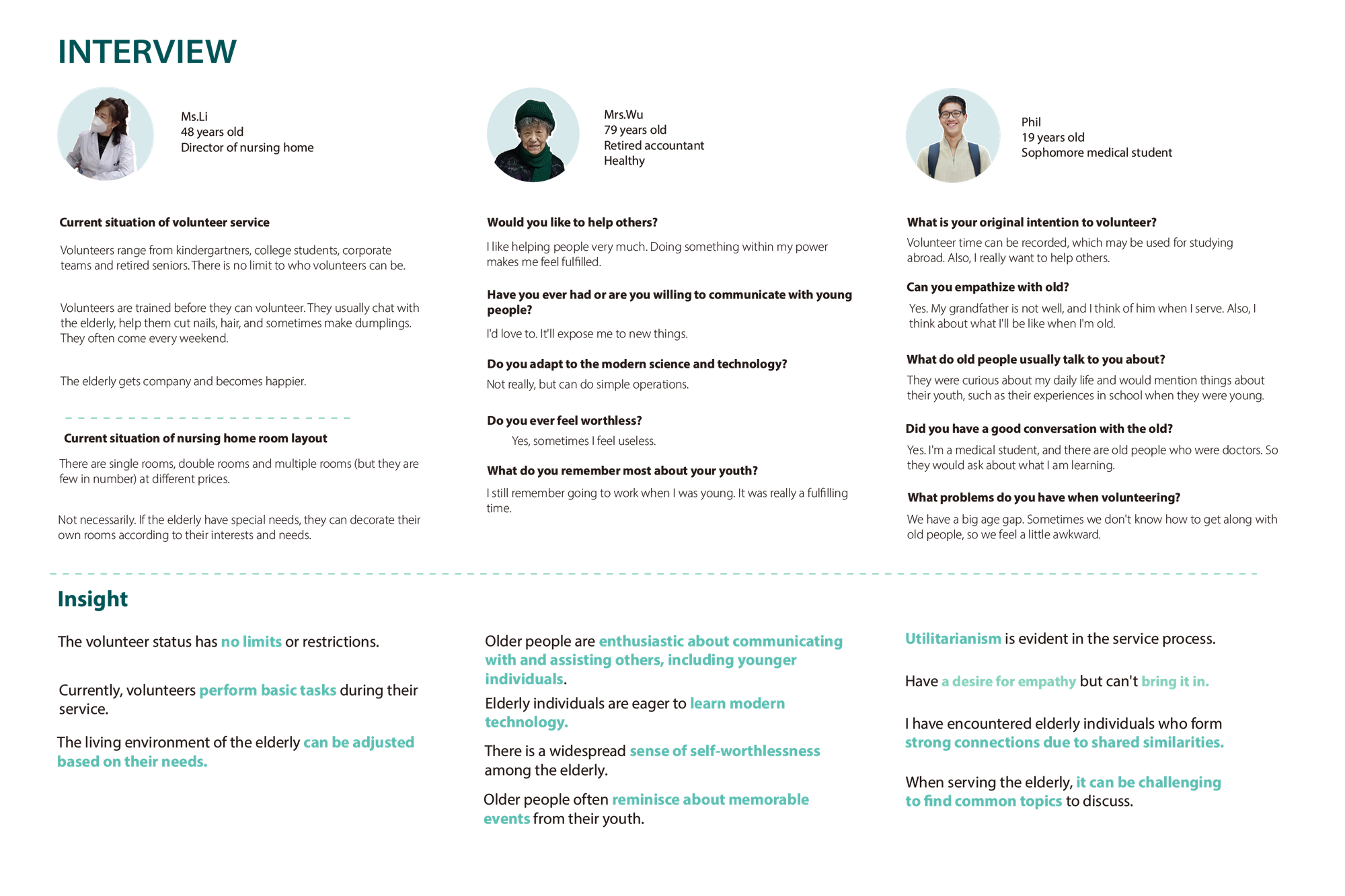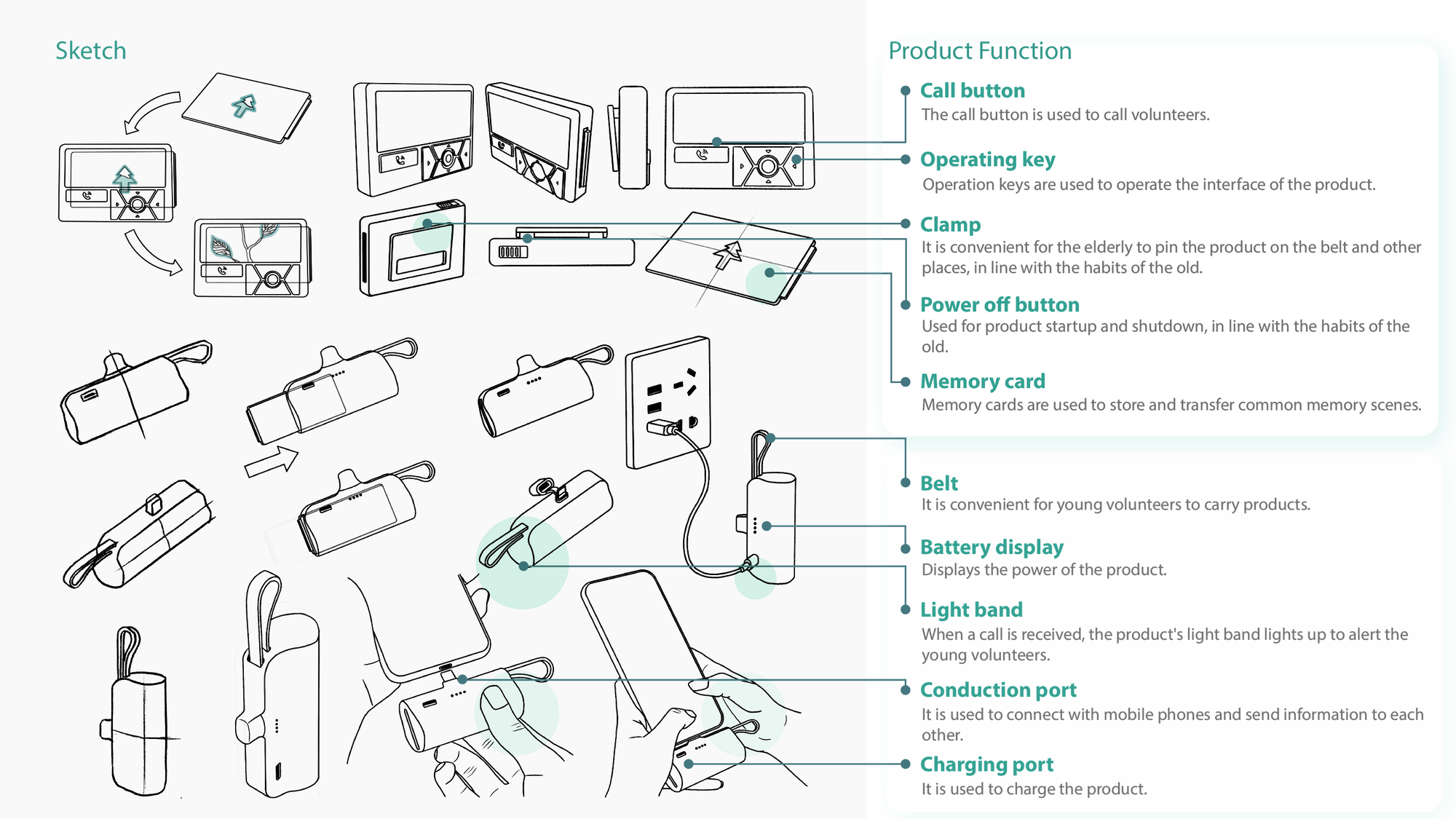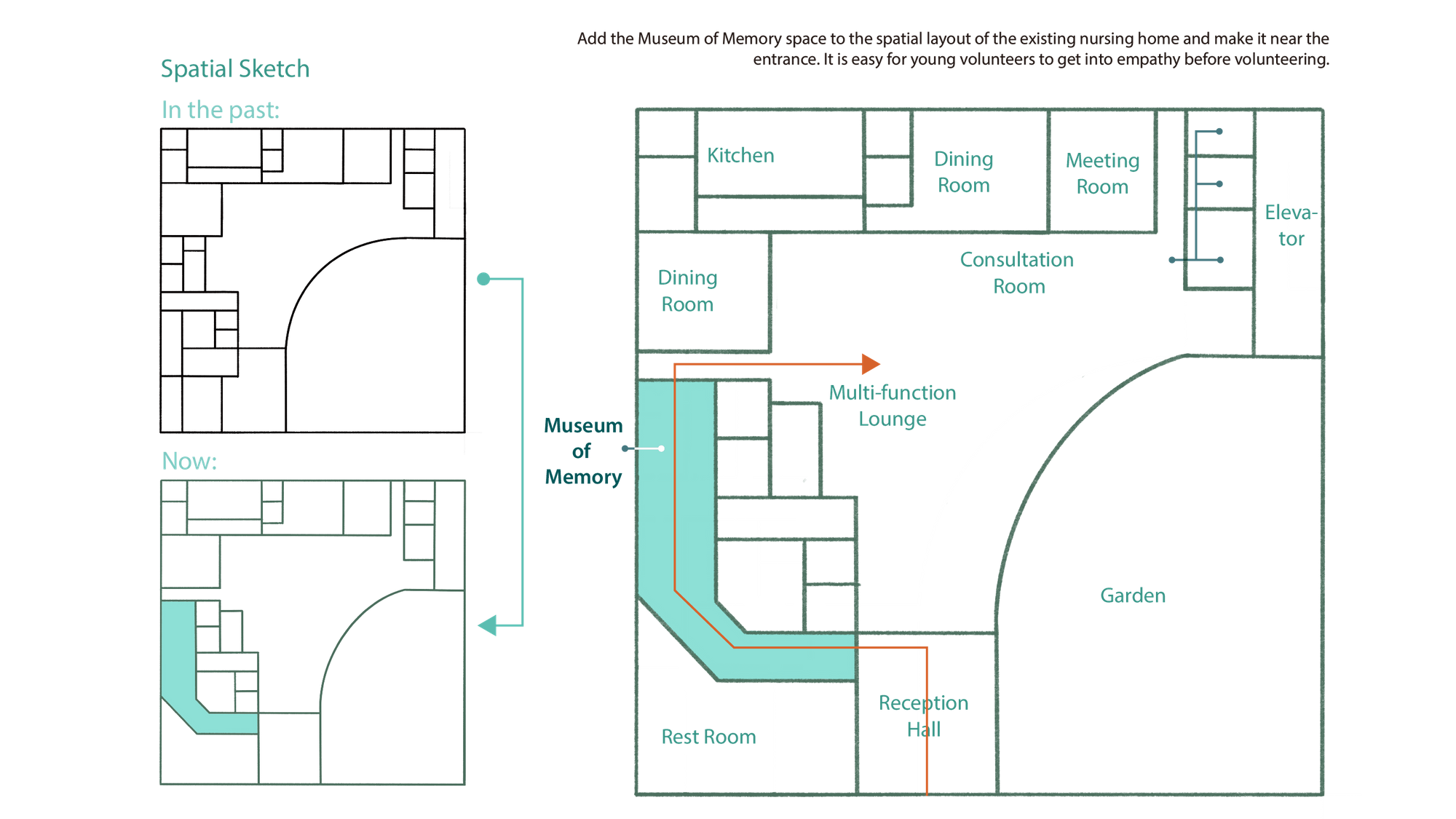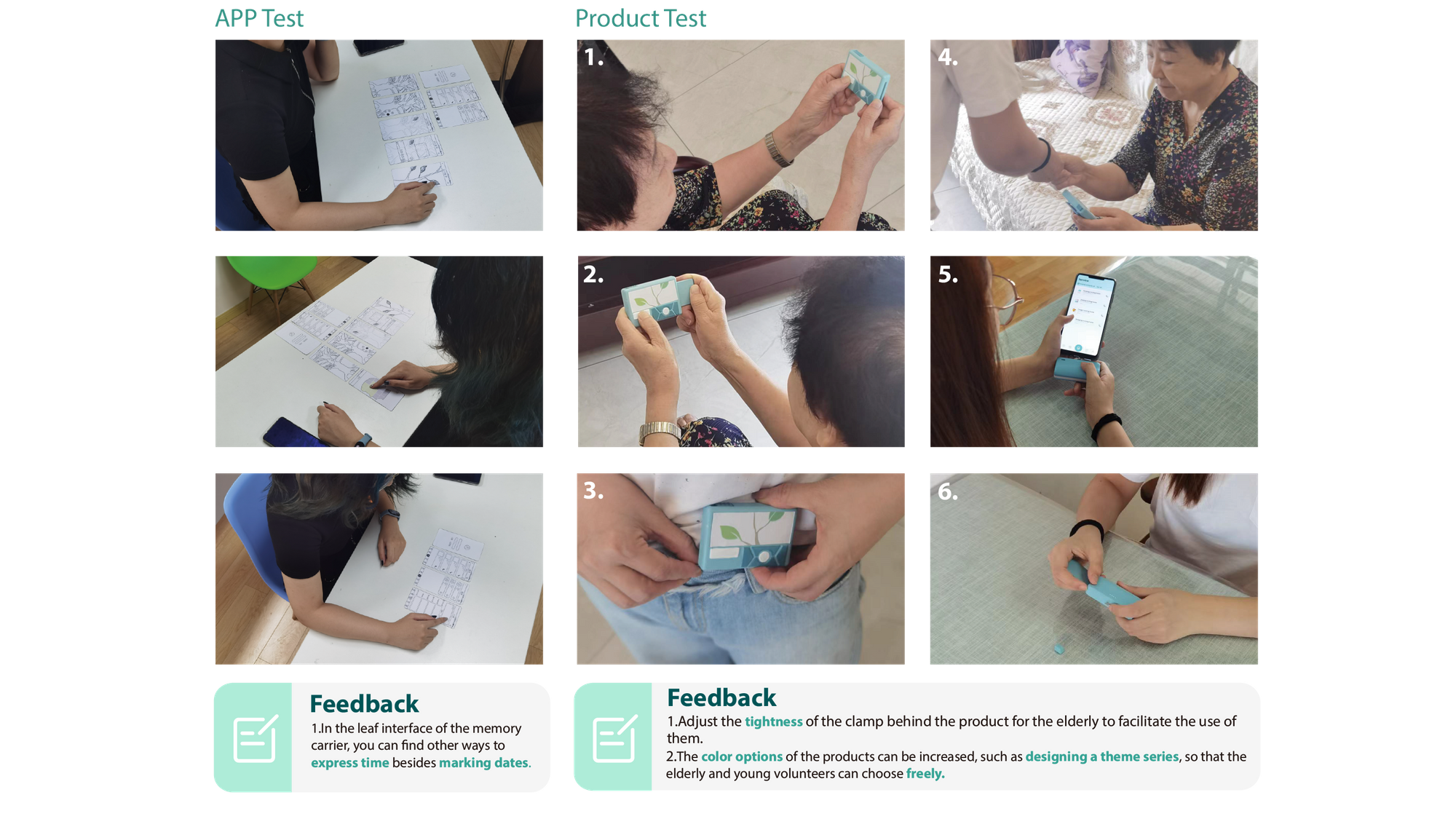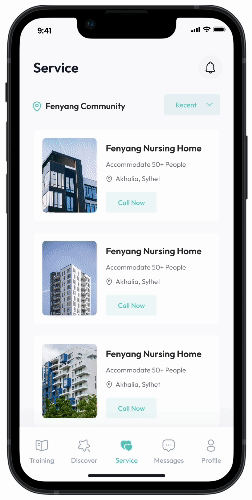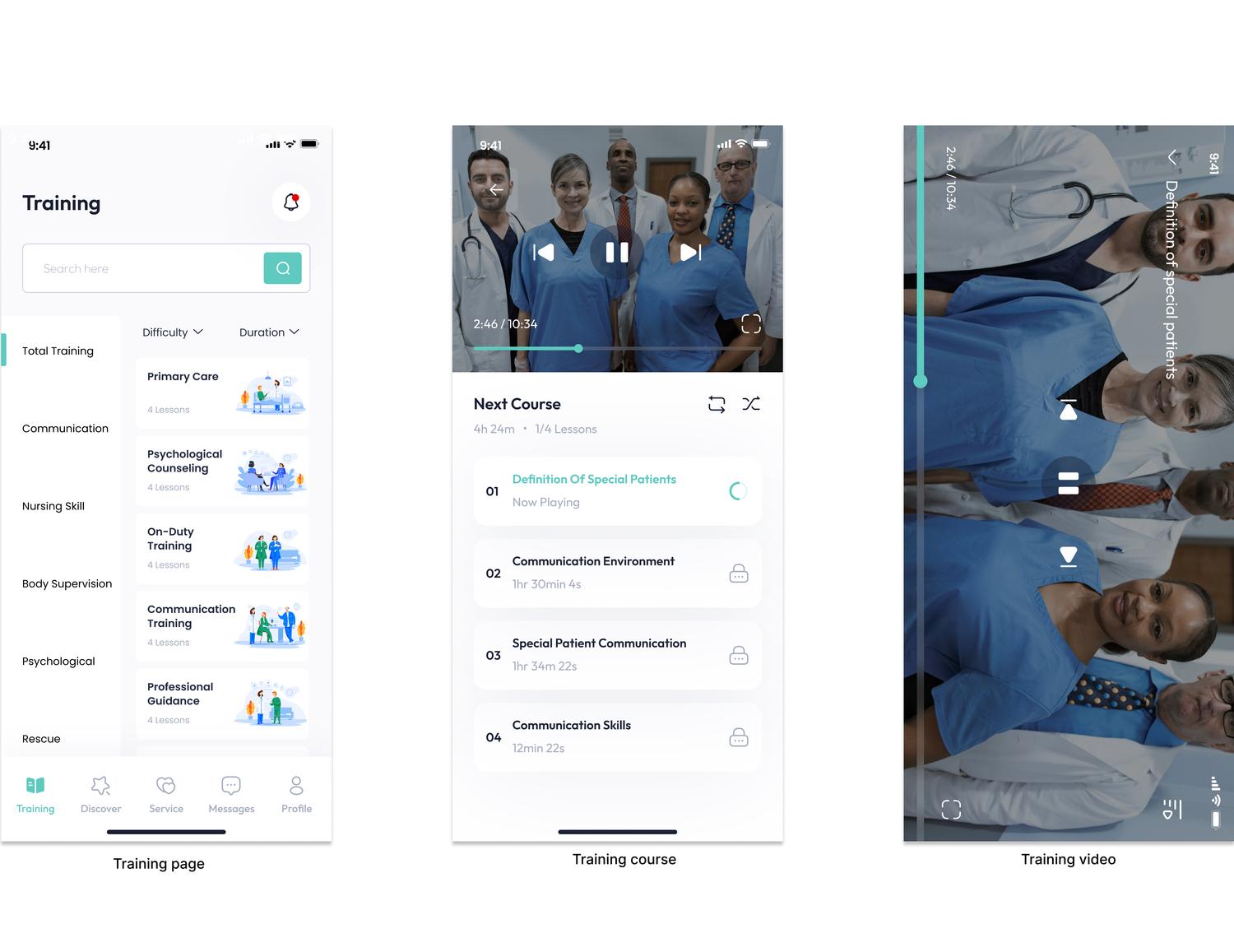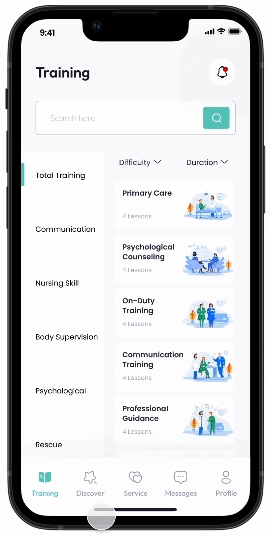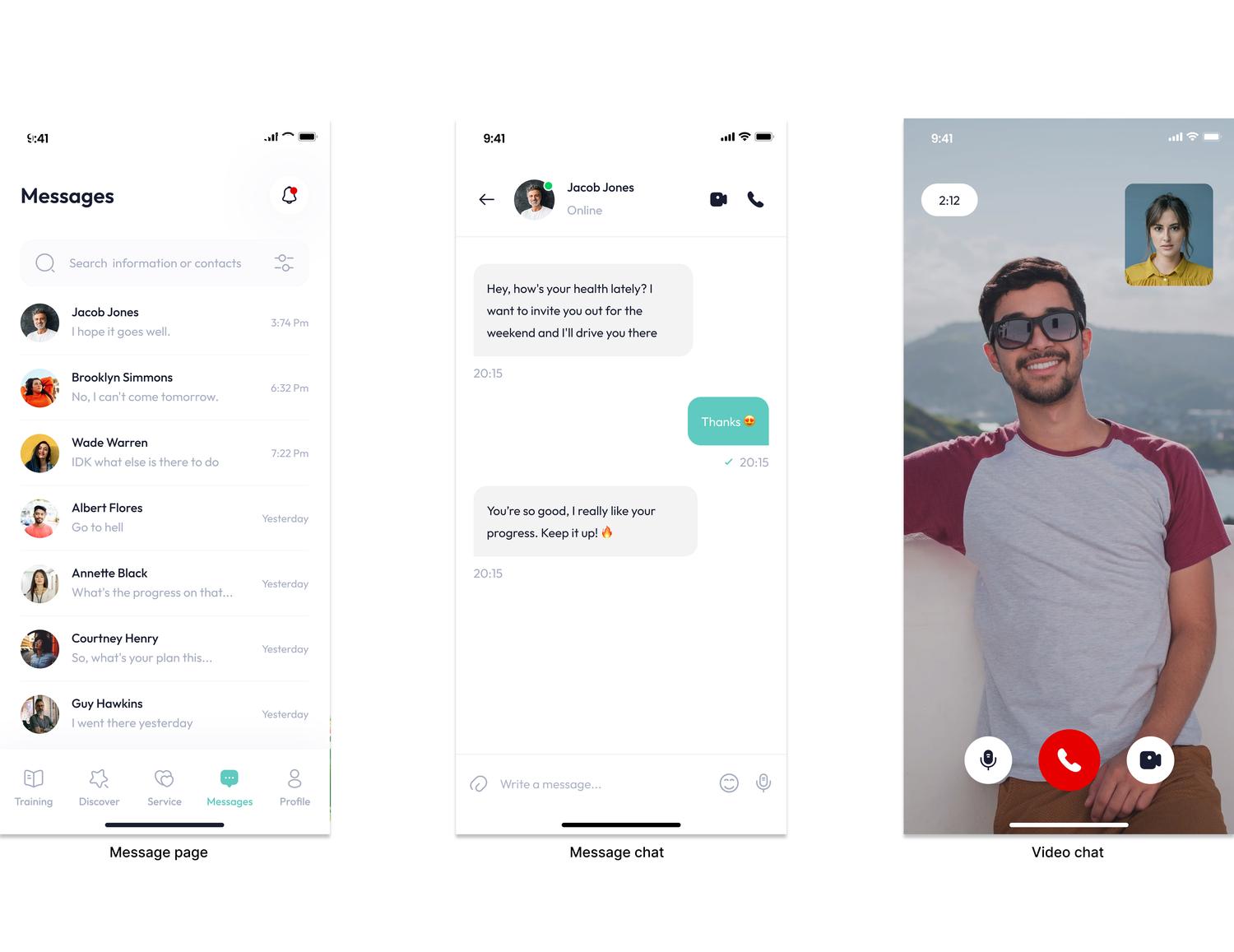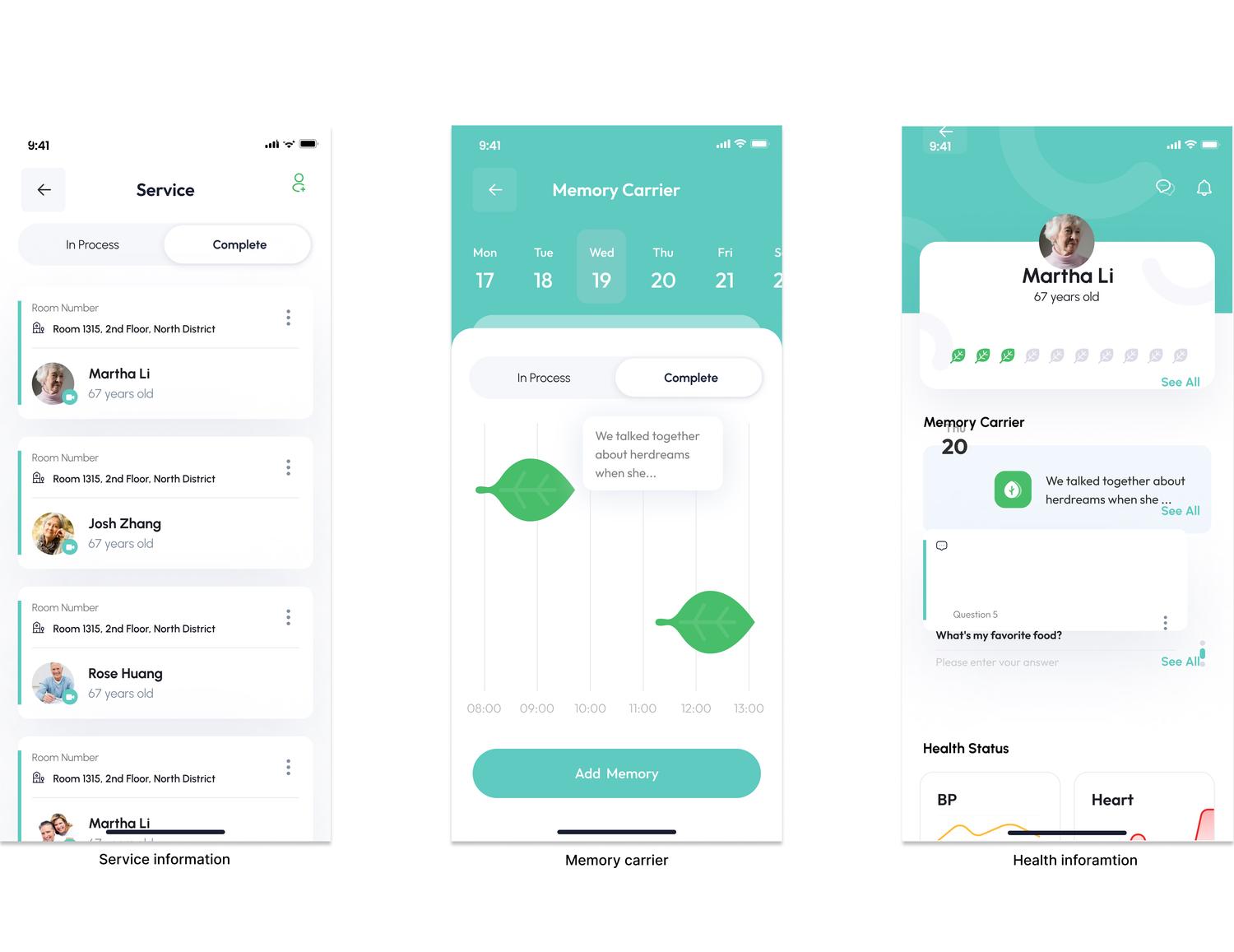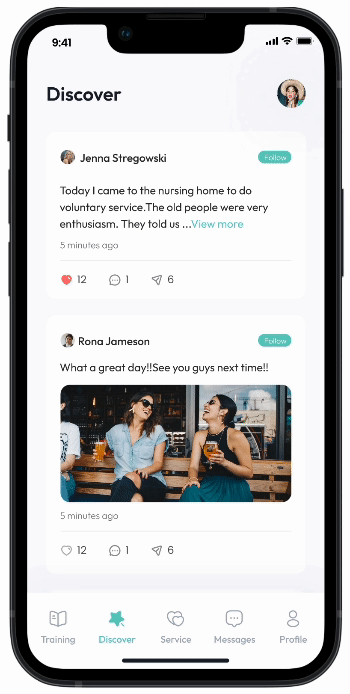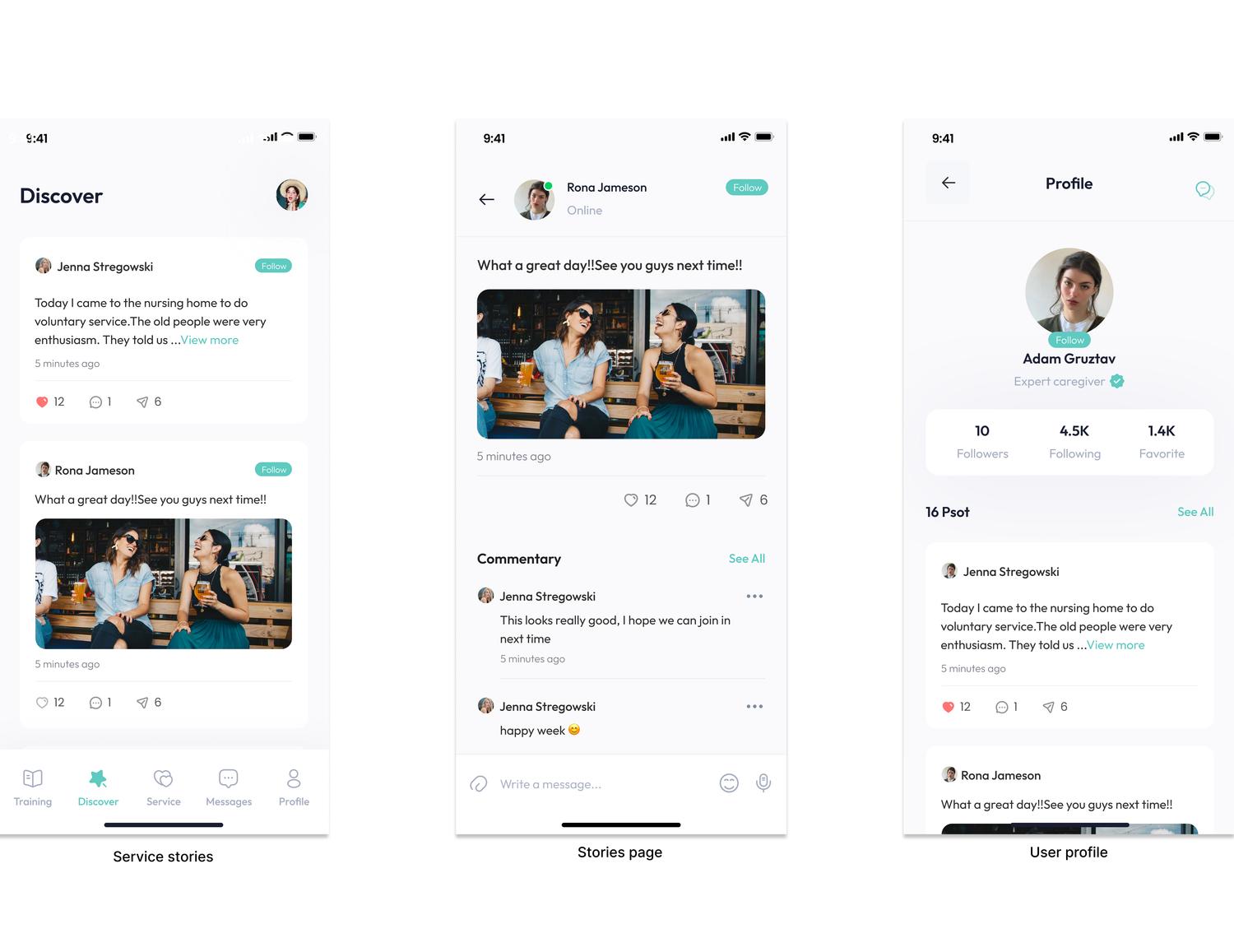Prototype
Providing training resources for volunteers
Volunteers can create profiles with contact details, availability, and skills. They access training materials like manuals, videos, and quizzes on hospital policies and patient care, and can complete and review these modules to stay prepared.
Communication Channels
Built-in messaging or chat functionality for communication between volunteers, hospital staff, and volunteer coordinators
This feature supports instant messaging and group chats for volunteers and staff, enabling quick information exchange and collaboration. Volunteers can also send private messages for specific or confidential inquiries.
Uploading Service Memory into Archive:
Empower volunteers to contribute meaningfully to the care and well-being of elderly patients, promote continuity of care
Volunteers can upload memories or records of their interactions with elderly patients into a digital archive within the app. This feature allows volunteers to document meaningful moments, activities, or conversations with elderly patients, preserving their memories and experiences for future reference and reflection. Volunteers can tag and categorize uploaded memories based on relevant criteria such as patient name, date, location, or activity type. Uploaded memories are automatically linked to the respective profiles of elderly patients within the app. Integration with elderly profiles allows volunteers, caregivers, and healthcare professionals to access relevant memories and update patient information based on recent interactions and observations.
Discovery of Service Stories
Create a vibrant and engaging platform that celebrates volunteer contributions, promotes knowledge sharing and collaboration
The app includes a feed or timeline where volunteers can discover and browse service stories shared by other volunteers. The story feed provides a centralized place for volunteers to explore and engage with a variety of service stories, fostering a sense of community and connection among volunteers. Each service story includes detailed information about the volunteer's experience, including the date, location, activities performed, and interactions with patients or staff. Volunteers can like, comment on, and share service stories with their peers within the app.
